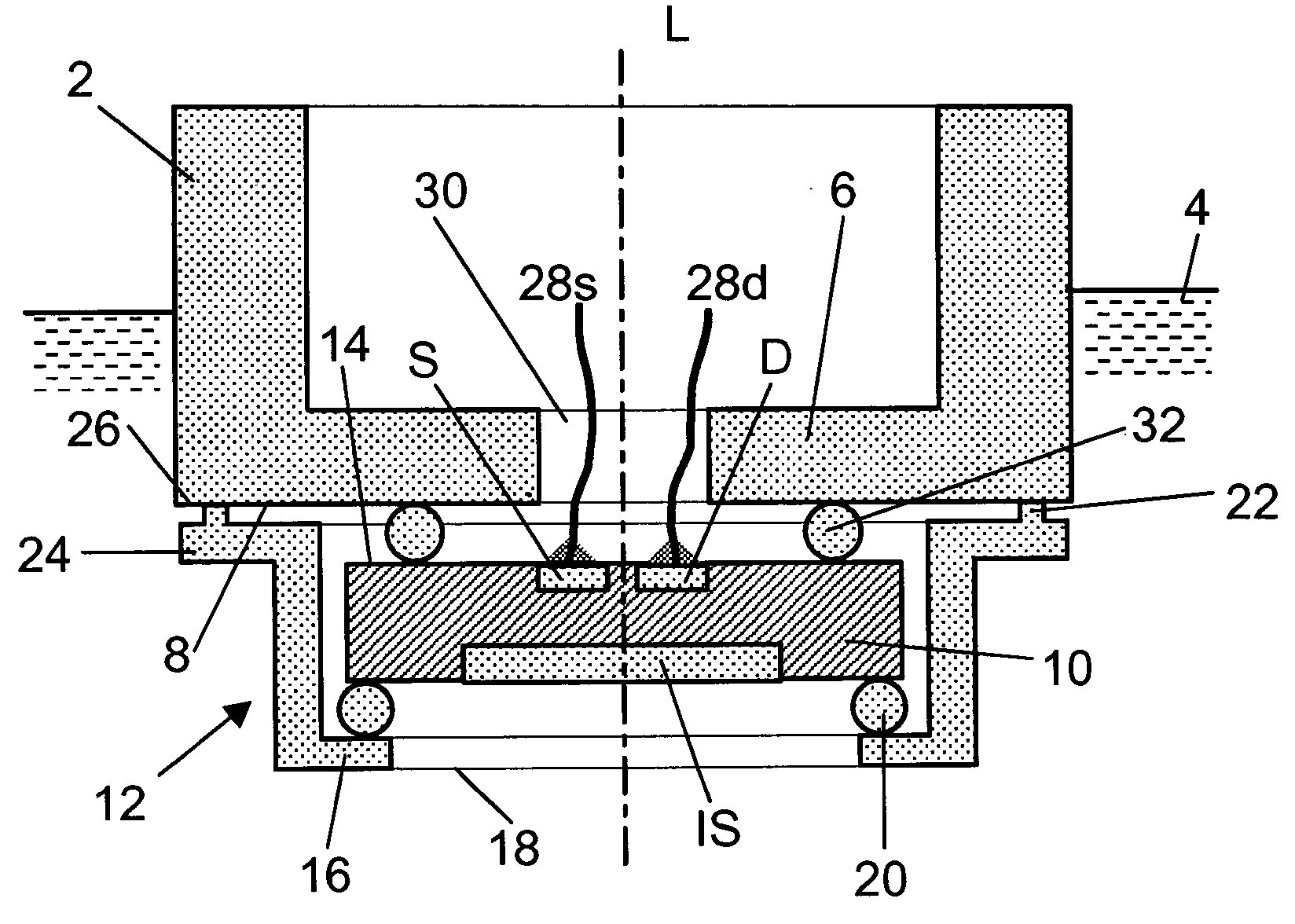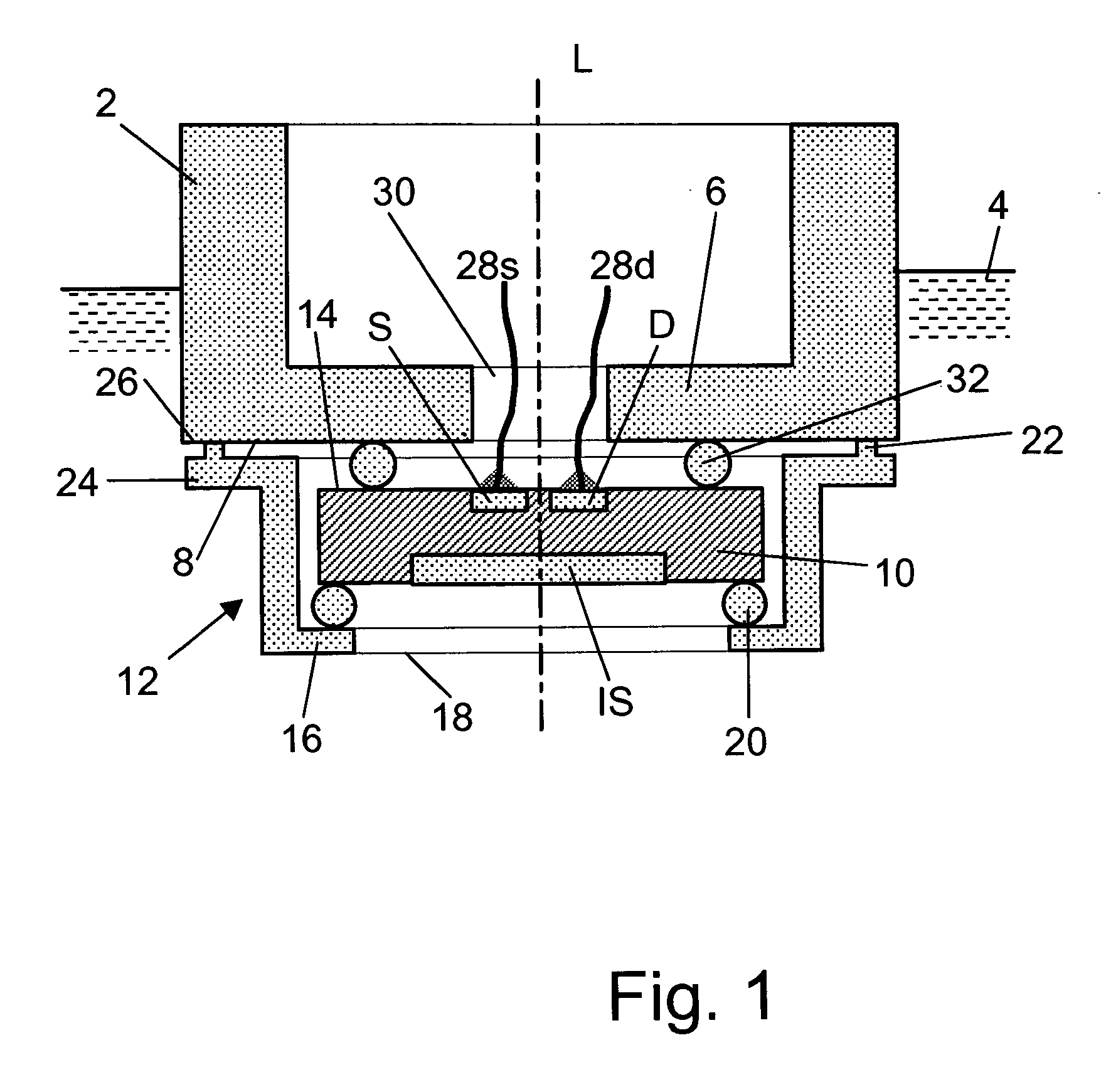Electrochemical sensor
a technology of electrochemical sensors and sensors, applied in the field of electrochemical sensors, can solve the problems of high manufacturing cost, complicated and high complexity of the sensors, and limit the selection of available types of isfets
- Summary
- Abstract
- Description
- Claims
- Application Information
AI Technical Summary
Benefits of technology
Problems solved by technology
Method used
Image
Examples
Embodiment Construction
[0023] The sensor shown in FIG. 1 has a substantially cylindrical sensor housing 2 of polyether ether ketone (PEEK), which is immersed in a measuring medium 4. The sensor housing 2 has a bottom wall 6 with an external end surface 8. The sensor is equipped with a disc-shaped ion-sensitive field effect transistor (ISFET) 10 which has a source connection S and a drain connection D on its backside and an ion-sensitive surface area IS in contact with the measuring medium on the front side. A sleeve-shaped clamping element 12 of the same material as the sensor housing pushes the ISFET 10 against the end surface 8 of the sensor housing 2, so that the rear surface 14 of the ISFET which faces away from the ion-sensitive surface area IS is clamped against the end surface 8 of the sensor housing 2. To perform this function, the clamping element 12 has an inward-projecting flange collar 16 on the side that faces away from the sensor housing 2. The flange collar 16 overlaps the periphery of the ...
PUM
 Login to View More
Login to View More Abstract
Description
Claims
Application Information
 Login to View More
Login to View More - R&D
- Intellectual Property
- Life Sciences
- Materials
- Tech Scout
- Unparalleled Data Quality
- Higher Quality Content
- 60% Fewer Hallucinations
Browse by: Latest US Patents, China's latest patents, Technical Efficacy Thesaurus, Application Domain, Technology Topic, Popular Technical Reports.
© 2025 PatSnap. All rights reserved.Legal|Privacy policy|Modern Slavery Act Transparency Statement|Sitemap|About US| Contact US: help@patsnap.com



